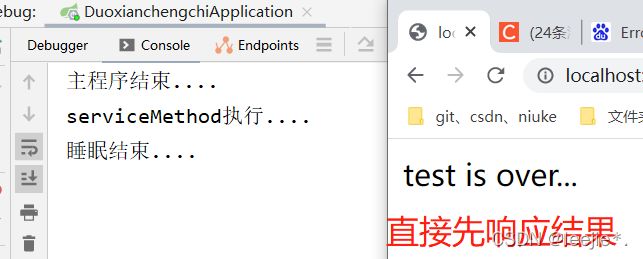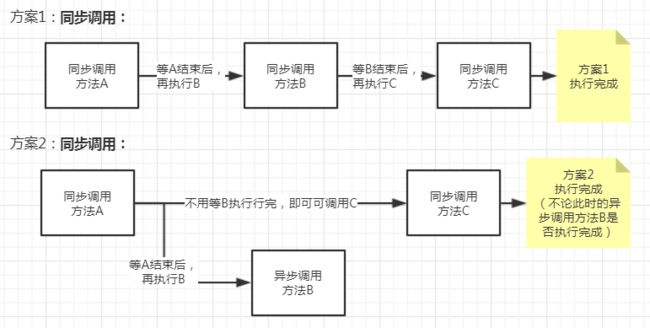- nodejs+mysql分页查询
m0_67987829
mysql前端node.js
router:(参数page,size)goodsRouter.get("/getList",getGoodsList)controllerasyncgetGoodsList(ctx,next){const{page,size}=ctx.query;//获取查询参数//将page和size转换为数字类型constparsedPage=parseInt(page);constparsedSize=p
- sequelize + Nodejs + MySQL 的简单用法
小公鸡卡哇伊呀~
mysql数据库
HowtoUseSequelizeORMinNodeJS-Tutorial1Sequlize简介Sequelize是最流行的可以与Nodejs一起使用的一种关系数据库ORM(Object-relationalmapping对象关系映射),Mongoose是MongoDB的ORM.Sequelize的作用,简单地说,就是避免在代码里写原生SQL语句,而是将这种语句改成JavaScript:不必再写类
- InfluxDB写入测试
PascalMing
编程influxdbjava读写测试
早几年测试时序库时,采集数据到kafka,然后用不同数据进行存储验证。Influxdb是花时间比较多的,它的数据建模方法、读写方法都需要使用特殊的API。时间久了自己也经常忘记,把当时的测试关键代码记录下来,也方便日后查找。代码基于java编写。1、接口数据定义,clientid+tag组合必须唯一publicclassKafkaInfo{//客户端idpublicStringclientid;/
- JavaScript 的 requestAnimationFrame
小华0000
javascript开发语言ecmascript
在现代Web开发中,用户体验至关重要。动画作为用户交互的重要组成部分,如果处理不当,很容易出现卡顿、掉帧等问题,严重影响用户体验。幸运的是,JavaScript提供了一个强大的API:requestAnimationFrame(简称rAF),它为我们创建平滑、高效的动画提供了坚实的基础。本文将深入探讨requestAnimationFrame的原理、使用、高级技巧以及在实际项目中的应用,帮助你掌握
- 用maven生成springboot多模块项目
tan_jianhui
软件开发springbootmavenjava
用Maven生成SpringBoot多模块项目,可以按照以下步骤操作:1.创建父项目首先,使用Maven的archetype插件创建一个空的Maven项目作为父项目。打开终端,执行以下命令:mvnarchetype:generate-DgroupId=com.example-DartifactId=springboot-multi-module-demo-DarchetypeArtifactId=
- RabbitMQ在Spring Boot中的使用
VioletAmaranth
java-rabbitmqrabbitmqspring
在SpringBoot中使用RabbitMQ涉及多个步骤,包括配置、创建监听器和发送消息。以下是详细的使用指南:1.添加依赖需要在项目的pom.xml文件中添加spring-boot-starter-amqp依赖:org.springframework.bootspring-boot-starter-amqp这将触发自动配置。2.配置文件在application.properties或applic
- 在Spring Boot中使用RabbitMQ实现延迟队列
angen2018
#springbootrabbitMQjava-rabbitmqspringbootrabbitmq
要在SpringBoot中使用RabbitMQ实现延迟队列,有两种主要的方法:1.**使用TTL(TimeToLive)和DLX(DeadLetterExchange)**:这种方法不需要安装额外的插件,通过设置消息的TTL或者队列的TTL属性来实现延迟效果。当消息达到设定的TTL时间且未被消费时,它会变成死信(DeadLetter),并根据DLX和死信路由键转发到指定的延迟消费队列。这种方式的一
- Cesium在三维模型中的应用
IT邦少
前端贴图
Cesium在三维模型中的应用Cesium简介Cesium介绍Cesium是一个跨平台,跨浏览器的展示三维地球和地图的javascript库Cesium使用WebGL来进行硬件加速图形,使用时不需要任何插件支持,但是浏览器必须支持WebGLCesium是基于Apache2.0许可的开源程序,它可以免费的用于商业和非商业用途Cesium特点支持2D,2.5D,3D形式的地图展示可以绘制各种几何图形,
- 2025前端面试题超全面解析(附答案与深度扩展)
北辰alk
前端前端
文章目录一、HTML篇(扩展版)1.**HTML5语义化标签的实际应用场景**2.**WebComponents实战:如何封装一个自定义按钮组件?**3.**WebWorker的用途与限制**二、CSS篇(扩展版)1.**CSS盒模型详解:border-boxvscontent-box**2.**CSS动画性能优化技巧**3.**CSS预处理器(Sass/Less)核心功能对比**三、JavaSc
- Cesium-三维地球可视化应用
程序员_三木
Web3dwebglThree.js
什么是CesiumJS?CesiumJS是一个强大的开源JavaScript库,用于构建高性能的3D地图和地球可视化应用。无论你是从事地理信息系统(GIS)开发、数据可视化,还是需要展示空间数据,CesiumJS都能提供灵活的解决方案。它以WebGL为核心,专注于大规模地理空间数据的实时渲染。CesiumJS是Cesium平台的核心部分,与Cesiumion等服务无缝集成,支持从数据管理到可视化的
- 三级缓存无法解决的@Async的循环依赖异常以及@Lazy解决方案
八股文领域大手子
springjava后端
在Spring中,@Async注解用于将方法标记为异步执行,其底层依赖动态代理机制实现。当Bean之间存在循环依赖且使用了@Async时,会因代理对象的生成时机与循环依赖的解决机制冲突而抛出异常。以下是详细分析:1.代理的生成时机与循环依赖的冲突(1)正常循环依赖的解决流程Spring通过三级缓存解决单例Bean的循环依赖问题:实例化阶段:创建Bean的原始对象,存入三级缓存(singletonF
- 深度探索 Java 代码审计:筑牢安全防线的关键之路
阿贾克斯的黎明
javajava安全开发语言
在当今高度数字化的时代,软件安全成为了至关重要的议题。对于众多使用Java语言进行开发的程序员而言,深入掌握Java代码审计技能,无疑是守护软件安全的核心手段。本文将围绕一本涵盖Java代码审计丰富知识的书籍目录,全面剖析Java代码审计的各个关键环节以及其在CTFAWD比赛中的重要应用。一、学习经验:开启Java代码审计的智慧之门Java代码审计之路并非坦途,需要有系统的学习方法和实践经验。书籍
- 前端初学者,该如何开始学习?
四六的六
前端学习个人开发
前端初学者,该如何开始学习?嗨,作为一个曾经的前端小白,现在也算是入门了,我特别理解刚开始学习前端时的迷茫,所以很愿意和你分享一下我的学习经验。刚开始的时候,得先搞清楚前端技术到底是啥。简单来说,前端就是咱们平常在浏览器里看到的网页那些东西。它主要由HTML、CSS和JavaScript三个部分组成。HTML(超文本标记语言):作为构建网页内容的基石,HTML以其独特的标签体系定义了网页的基本架构
- 推荐开源项目:vue-strap —— Bootstrap与Vue.js的完美结合
殷巧或
推荐开源项目:vue-strap——Bootstrap与Vue.js的完美结合去发现同类优质开源项目:https://gitcode.com/项目介绍虽然该项目已被废弃,但它的两个替代方案,bootstrap-vue和uiv,仍然是构建基于Vue.js应用时,实现Bootstrap组件的强大选择。vue-strap原本是一个用Vue.js实现的Bootstrap组件库,无需依赖jQuery或Boo
- SpringBoot 3.4.x踩坑记录及解决方案(持续更新)
brrdg_sefg
面试学习路线阿里巴巴springboot后端java
废话最近使用JDK17+SpringBoot3.4.0做新项目遇到的一些坑,记录并且给出一些实际的解决方案一、集成MybatisPlus3.5.9的问题第一:不能只引入mybatis-plus-spring-boot3-starter依赖了,需要配合mybatis-plus-jsqlparsercom.baomidoumybatis-plus-spring-boot3-startercom.bao
- Spring Boot中使用RabbitMQ实现简单的消息发送与接收
Takumilovexu
MQjava-rabbitmqrabbitmqspringboot
文章目录环境准备1.RabbitMQ的基础配置2.实现消息发送功能3.实现消息接收功能4.总结在微服务架构和分布式系统中,消息队列是实现异步通信和解耦的重要工具。RabbitMQ作为一种常见的消息中间件,广泛应用于消息传递、任务分发等场景。本文将带你一步步实现如何在SpringBoot应用中使用RabbitMQ进行消息的发送和接收。我们将构建一个消息发送者(Publisher)和一个消息接收者(C
- Cesium实时建筑物三维可视化与地理信息系统(GIS)
OvzStream
GIS
近年来,随着科技的不断发展,地理信息系统(GIS)和三维可视化技术在城市规划、建筑设计和地理空间分析中扮演着越来越重要的角色。在这篇文章中,我们将探讨如何利用Cesium库实现实时建筑物的三维可视化与GIS集成,为读者展示如何通过编写代码来实现这一功能。首先,我们需要了解Cesium是什么。Cesium是一个开源的JavaScript库,专门用于创建基于Web的地理信息系统应用程序。它提供了强大的
- JavaWeb学习——登录校验
灰太狼想上班
JavaWeb基础学习springtomcatservlet后端
JavaWeb学习——登录校验一、功能实现只需要接受请求参数username和password,然后调用接口在数据库表中查询键值匹配的数据项即可二、登录校验登录校验通常分为两步,一是登录标记,二是统一拦截1、会话跟踪会话:用户打开浏览器,访问web服务器的资源,会话建立,知道有一方断开连接,会话结束。在一次会话中可以包含多次请求和响应会话跟踪:一种维护浏览器的方法,服务器要识别多次请求是否来自于同
- Java面试精选(1):Spring,SpringMVC,SpringBoot,SpringCloud有什么区别和联系?
Java面试精选
springjavaspringbootvue编程语言
简单介绍Spring是一个轻量级的控制反转(IoC)和面向切面(AOP)的容器框架。Spring使你能够编写更干净、更可管理、并且更易于测试的代码。SpringMVC是Spring的一个模块,一个web框架。通过DispatcherServlet,ModelAndView和ViewResolver,开发web应用变得很容易。主要针对的是网站应用程序或者服务开发——URL路由、Session、模板引
- Kotlin知识体系(一) : Kotlin的五大基础语法特性
氦客
知识体系-Kotlin基础kotlin开发语言android基础语法特性知识体系
前言在Android开发领域,Kotlin凭借其简洁性和安全性已成为官方推荐语言。本文将通过Kotlin的五大基础语法特性,结合实际应用场景展示它们在Android开发中的独特价值。一、变量声明:val与var的哲学1.1不可变优先原则Kotlin的val关键字用于声明不可变变量(相当于Java的final),这是构建可靠Android应用的基石:valPI=3.14159//类型推断为Doubl
- 用Java爬虫轻松获取微店店铺所有商品信息
数据小爬虫@
java爬虫开发语言
在当今电商蓬勃发展的时代,微店作为一个轻量级且功能强大的电商平台,吸引了众多商家和消费者。无论是进行市场调研、数据分析,还是寻找热门商品,获取微店店铺的所有商品信息都是一项极具价值的任务。然而,手动浏览和整理这些信息显然是低效且容易出错的。幸运的是,通过编写Java爬虫程序,我们可以高效地完成这一任务。本文将详细介绍如何利用Java爬虫获取微店店铺的所有商品信息。一、为什么选择Java爬虫?Jav
- 前端初学者,有哪些适合的学习网站?
四六的六
前端学习个人开发
对于前端初学者而言,选择合适的学习网站至关重要,以下是一些我知道的优质学习平台,在这里分享给大家:菜鸟教程:该网站以其简洁明了的界面设计和通俗易懂的教程内容而受到广大初学者的欢迎。其前端教程体系涵盖了前端开发的大量入门知识,包括HTML、CSS、JavaScript等基础技术,以及当前主流的前端框架和工具的使用方法,如Vue.js、React、Webpack等。教程内容的讲解方式深入浅出,注重从基
- Spring 核心注解深度解析教程
我不是少爷.
Java基础springpythonjava
(涵盖@Component/@Repository/@Service/@Controller/@Autowired/@Qualifier/@Resource/@Value)一、组件扫描与分层注解1.@Component基础组件标识@Component//通用组件标识publicclassBasicComponent{//会被Spring自动扫描并注册为Bean}特性:所有组件注解的基类默认Bean
- 书籍-《深度生成模型(第二版)》
书籍:DeepGenerativeModeling作者:JakubM.Tomczak出版:Springer编辑:陈萍萍的公主@一点人工一点智能下载:书籍下载-《深度生成模型(第二版)》01书籍介绍本书是关于生成式AI背后模型的第一本全面著作,经过彻底修订,涵盖了所有主要类别的深度生成模型,包括混合模型、概率电路、自回归模型、基于流的模型、潜在变量模型、生成对抗网络(GANs)、混合模型、基于得分的
- Uncaught (in promise)
weixin_42601702
javascript前端vue.jsjson开发语言
"Uncaught(inpromise)"的意思是"未捕获(在承诺中)",通常出现在使用JavaScript中的Promise对象时。它表示在一个Promise对象中发生了错误,但是没有被处理,也就是没有被"捕获"。这通常是由于没有正确处理Promise链中的异常而导致的。要解决此问题,可以在Promise链中使用catch()方法来捕获错误,并采取适当的措施来处理它们。另外,也可以使用try-c
- Apache Doris 3.0.4 版本正式发布
亲爱的社区小伙伴们,ApacheDoris3.0.4版本已于2025年02月28日正式发布。该版本持续在存算分离、湖仓一体、异步物化视图等方面进行改进提升与问题修复,进一步加强系统的性能和稳定性,欢迎大家下载体验。官网下载:https://doris.apache.org/downloadGitHub下载:https://github.com/apache/doris/releases/tag/3
- 为什么很多人喷 Java 开发者离了 spring 框架就不会写代码了
getapi
javaspring开发语言
很多人批评Java开发者离开Spring框架后难以独立开发的原因可从技术特性与开发者习惯两方面分析:Java语言的历史设计局限Java的泛型实现存在缺陷,其原始值包装类(如Integer与int)的自动装拆箱机制出现较晚(Java5引入),且编译器无法彻底解决原始值与包装类的隐式转换问题[[1]][[2]]。这种设计导致开发者在处理基础类型与对象时需要额外关注类型转换,而Spring框架通过封装(
- 面试中必会的Java基础(一)
每次的天空
面试java学习
Java是面向对象编程所以第一就是面向对象编程的特点是什么?面向对象编程类与对象:掌握类的定义、成员变量和成员方法的声明与使用,以及如何通过类创建对象。理解对象的生命周期,包括创建、使用和销毁。封装:明白封装的概念,即把数据和操作数据的方法封装在一个类中,通过访问修饰符(public、private、protected等)来控制对类成员的访问。继承:理解继承的概念和作用,掌握通过extends关键
- Spring Boot Security 实战指南:从零开始构建安全可靠的应用
无眠_
springboot数据库网络
SpringBootSecurity实战指南:从零开始构建安全可靠的应用摘要:网络安全至关重要,SpringBootSecurity提供了强大的安全框架,帮助我们轻松构建安全可靠的应用。本文将从零开始,手把手教你如何在SpringBoot应用中集成SpringSecurity,实现用户认证、权限控制等核心安全功能,并结合代码示例,让你快速上手,打造坚如磐石的应用安全防线!1.引言:安全是应用开发的
- Spring Boot 核心知识点精讲:助你快速上手与深度理解
无眠_
springboot运维后端
SpringBoot核心知识点精讲:助你快速上手与深度理解摘要:SpringBoot以其约定优于配置、快速开发、易部署等特性,成为Java微服务开发的首选框架。本文将深入浅出地介绍SpringBoot的核心知识点,包括自动配置、起步依赖、依赖注入、外部化配置等,帮助读者快速上手SpringBoot并深入理解其运行机制,为高效开发SpringBoot应用打下坚实基础。关键词:SpringBoot,自
- LeetCode[Math] - #66 Plus One
Cwind
javaLeetCode题解AlgorithmMath
原题链接:#66 Plus One
要求:
给定一个用数字数组表示的非负整数,如num1 = {1, 2, 3, 9}, num2 = {9, 9}等,给这个数加上1。
注意:
1. 数字的较高位存在数组的头上,即num1表示数字1239
2. 每一位(数组中的每个元素)的取值范围为0~9
难度:简单
分析:
题目比较简单,只须从数组
- JQuery中$.ajax()方法参数详解
AILIKES
JavaScriptjsonpjqueryAjaxjson
url: 要求为String类型的参数,(默认为当前页地址)发送请求的地址。
type: 要求为String类型的参数,请求方式(post或get)默认为get。注意其他http请求方法,例如put和 delete也可以使用,但仅部分浏览器支持。
timeout: 要求为Number类型的参数,设置请求超时时间(毫秒)。此设置将覆盖$.ajaxSetup()方法的全局
- JConsole & JVisualVM远程监视Webphere服务器JVM
Kai_Ge
JVisualVMJConsoleWebphere
JConsole是JDK里自带的一个工具,可以监测Java程序运行时所有对象的申请、释放等动作,将内存管理的所有信息进行统计、分析、可视化。我们可以根据这些信息判断程序是否有内存泄漏问题。
使用JConsole工具来分析WAS的JVM问题,需要进行相关的配置。
首先我们看WAS服务器端的配置.
1、登录was控制台https://10.4.119.18
- 自定义annotation
120153216
annotation
Java annotation 自定义注释@interface的用法 一、什么是注释
说起注释,得先提一提什么是元数据(metadata)。所谓元数据就是数据的数据。也就是说,元数据是描述数据的。就象数据表中的字段一样,每个字段描述了这个字段下的数据的含义。而J2SE5.0中提供的注释就是java源代码的元数据,也就是说注释是描述java源
- CentOS 5/6.X 使用 EPEL YUM源
2002wmj
centos
CentOS 6.X 安装使用EPEL YUM源1. 查看操作系统版本[root@node1 ~]# uname -a Linux node1.test.com 2.6.32-358.el6.x86_64 #1 SMP Fri Feb 22 00:31:26 UTC 2013 x86_64 x86_64 x86_64 GNU/Linux [root@node1 ~]#
- 在SQLSERVER中查找缺失和无用的索引SQL
357029540
SQL Server
--缺失的索引
SELECT avg_total_user_cost * avg_user_impact * ( user_scans + user_seeks ) AS PossibleImprovement ,
last_user_seek ,
- Spring3 MVC 笔记(二) —json+rest优化
7454103
Spring3 MVC
接上次的 spring mvc 注解的一些详细信息!
其实也是一些个人的学习笔记 呵呵!
- 替换“\”的时候报错Unexpected internal error near index 1 \ ^
adminjun
java“\替换”
发现还是有些东西没有刻子脑子里,,过段时间就没什么概念了,所以贴出来...以免再忘...
在拆分字符串时遇到通过 \ 来拆分,可是用所以想通过转义 \\ 来拆分的时候会报异常
public class Main {
/*
- POJ 1035 Spell checker(哈希表)
aijuans
暴力求解--哈希表
/*
题意:输入字典,然后输入单词,判断字典中是否出现过该单词,或者是否进行删除、添加、替换操作,如果是,则输出对应的字典中的单词
要求按照输入时候的排名输出
题解:建立两个哈希表。一个存储字典和输入字典中单词的排名,一个进行最后输出的判重
*/
#include <iostream>
//#define
using namespace std;
const int HASH =
- 通过原型实现javascript Array的去重、最大值和最小值
ayaoxinchao
JavaScriptarrayprototype
用原型函数(prototype)可以定义一些很方便的自定义函数,实现各种自定义功能。本次主要是实现了Array的去重、获取最大值和最小值。
实现代码如下:
<script type="text/javascript">
Array.prototype.unique = function() {
var a = {};
var le
- UIWebView实现https双向认证请求
bewithme
UIWebViewhttpsObjective-C
什么是HTTPS双向认证我已在先前的博文 ASIHTTPRequest实现https双向认证请求
中有讲述,不理解的读者可以先复习一下。本文是用UIWebView来实现对需要客户端证书验证的服务请求,网上有些文章中有涉及到此内容,但都只言片语,没有讲完全,更没有完整的代码,让人困扰不已。但是此知
- NoSQL数据库之Redis数据库管理(Redis高级应用之事务处理、持久化操作、pub_sub、虚拟内存)
bijian1013
redis数据库NoSQL
3.事务处理
Redis对事务的支持目前不比较简单。Redis只能保证一个client发起的事务中的命令可以连续的执行,而中间不会插入其他client的命令。当一个client在一个连接中发出multi命令时,这个连接会进入一个事务上下文,该连接后续的命令不会立即执行,而是先放到一个队列中,当执行exec命令时,redis会顺序的执行队列中
- 各数据库分页sql备忘
bingyingao
oraclesql分页
ORACLE
下面这个效率很低
SELECT * FROM ( SELECT A.*, ROWNUM RN FROM (SELECT * FROM IPAY_RCD_FS_RETURN order by id desc) A ) WHERE RN <20;
下面这个效率很高
SELECT A.*, ROWNUM RN FROM (SELECT * FROM IPAY_RCD_
- 【Scala七】Scala核心一:函数
bit1129
scala
1. 如果函数体只有一行代码,则可以不用写{},比如
def print(x: Int) = println(x)
一行上的多条语句用分号隔开,则只有第一句属于方法体,例如
def printWithValue(x: Int) : String= println(x); "ABC"
上面的代码报错,因为,printWithValue的方法
- 了解GHC的factorial编译过程
bookjovi
haskell
GHC相对其他主流语言的编译器或解释器还是比较复杂的,一部分原因是haskell本身的设计就不易于实现compiler,如lazy特性,static typed,类型推导等。
关于GHC的内部实现有篇文章说的挺好,这里,文中在RTS一节中详细说了haskell的concurrent实现,里面提到了green thread,如果熟悉Go语言的话就会发现,ghc的concurrent实现和Go有点类
- Java-Collections Framework学习与总结-LinkedHashMap
BrokenDreams
LinkedHashMap
前面总结了java.util.HashMap,了解了其内部由散列表实现,每个桶内是一个单向链表。那有没有双向链表的实现呢?双向链表的实现会具备什么特性呢?来看一下HashMap的一个子类——java.util.LinkedHashMap。
- 读《研磨设计模式》-代码笔记-抽象工厂模式-Abstract Factory
bylijinnan
abstract
声明: 本文只为方便我个人查阅和理解,详细的分析以及源代码请移步 原作者的博客http://chjavach.iteye.com/
package design.pattern;
/*
* Abstract Factory Pattern
* 抽象工厂模式的目的是:
* 通过在抽象工厂里面定义一组产品接口,方便地切换“产品簇”
* 这些接口是相关或者相依赖的
- 压暗面部高光
cherishLC
PS
方法一、压暗高光&重新着色
当皮肤很油又使用闪光灯时,很容易在面部形成高光区域。
下面讲一下我今天处理高光区域的心得:
皮肤可以分为纹理和色彩两个属性。其中纹理主要由亮度通道(Lab模式的L通道)决定,色彩则由a、b通道确定。
处理思路为在保持高光区域纹理的情况下,对高光区域着色。具体步骤为:降低高光区域的整体的亮度,再进行着色。
如果想简化步骤,可以只进行着色(参看下面的步骤1
- Java VisualVM监控远程JVM
crabdave
visualvm
Java VisualVM监控远程JVM
JDK1.6开始自带的VisualVM就是不错的监控工具.
这个工具就在JAVA_HOME\bin\目录下的jvisualvm.exe, 双击这个文件就能看到界面
通过JMX连接远程机器, 需要经过下面的配置:
1. 修改远程机器JDK配置文件 (我这里远程机器是linux).
- Saiku去掉登录模块
daizj
saiku登录olapBI
1、修改applicationContext-saiku-webapp.xml
<security:intercept-url pattern="/rest/**" access="IS_AUTHENTICATED_ANONYMOUSLY" />
<security:intercept-url pattern=&qu
- 浅析 Flex中的Focus
dsjt
htmlFlexFlash
关键字:focus、 setFocus、 IFocusManager、KeyboardEvent
焦点、设置焦点、获得焦点、键盘事件
一、无焦点的困扰——组件监听不到键盘事件
原因:只有获得焦点的组件(确切说是InteractiveObject)才能监听到键盘事件的目标阶段;键盘事件(flash.events.KeyboardEvent)参与冒泡阶段,所以焦点组件的父项(以及它爸
- Yii全局函数使用
dcj3sjt126com
yii
由于YII致力于完美的整合第三方库,它并没有定义任何全局函数。yii中的每一个应用都需要全类别和对象范围。例如,Yii::app()->user;Yii::app()->params['name'];等等。我们可以自行设定全局函数,使得代码看起来更加简洁易用。(原文地址)
我们可以保存在globals.php在protected目录下。然后,在入口脚本index.php的,我们包括在
- 设计模式之单例模式二(解决无序写入的问题)
come_for_dream
单例模式volatile乱序执行双重检验锁
在上篇文章中我们使用了双重检验锁的方式避免懒汉式单例模式下由于多线程造成的实例被多次创建的问题,但是因为由于JVM为了使得处理器内部的运算单元能充分利用,处理器可能会对输入代码进行乱序执行(Out Of Order Execute)优化,处理器会在计算之后将乱序执行的结果进行重组,保证该
- 程序员从初级到高级的蜕变
gcq511120594
框架工作PHPandroidhtml5
软件开发是一个奇怪的行业,市场远远供不应求。这是一个已经存在多年的问题,而且随着时间的流逝,愈演愈烈。
我们严重缺乏能够满足需求的人才。这个行业相当年轻。大多数软件项目是失败的。几乎所有的项目都会超出预算。我们解决问题的最佳指导方针可以归结为——“用一些通用方法去解决问题,当然这些方法常常不管用,于是,唯一能做的就是不断地尝试,逐个看看是否奏效”。
现在我们把淫浸代码时间超过3年的开发人员称为
- Reverse Linked List
hcx2013
list
Reverse a singly linked list.
/**
* Definition for singly-linked list.
* public class ListNode {
* int val;
* ListNode next;
* ListNode(int x) { val = x; }
* }
*/
p
- Spring4.1新特性——数据库集成测试
jinnianshilongnian
spring 4.1
目录
Spring4.1新特性——综述
Spring4.1新特性——Spring核心部分及其他
Spring4.1新特性——Spring缓存框架增强
Spring4.1新特性——异步调用和事件机制的异常处理
Spring4.1新特性——数据库集成测试脚本初始化
Spring4.1新特性——Spring MVC增强
Spring4.1新特性——页面自动化测试框架Spring MVC T
- C# Ajax上传图片同时生成微缩图(附Demo)
liyonghui160com
1.Ajax无刷新上传图片,详情请阅我的这篇文章。(jquery + c# ashx)
2.C#位图处理 System.Drawing。
3.最新demo支持IE7,IE8,Fir
- Java list三种遍历方法性能比较
pda158
java
从c/c++语言转向java开发,学习java语言list遍历的三种方法,顺便测试各种遍历方法的性能,测试方法为在ArrayList中插入1千万条记录,然后遍历ArrayList,发现了一个奇怪的现象,测试代码例如以下:
package com.hisense.tiger.list;
import java.util.ArrayList;
import java.util.Iterator;
- 300个涵盖IT各方面的免费资源(上)——商业与市场篇
shoothao
seo商业与市场IT资源免费资源
A.网站模板+logo+服务器主机+发票生成
HTML5 UP:响应式的HTML5和CSS3网站模板。
Bootswatch:免费的Bootstrap主题。
Templated:收集了845个免费的CSS和HTML5网站模板。
Wordpress.org|Wordpress.com:可免费创建你的新网站。
Strikingly:关注领域中免费无限的移动优
- localStorage、sessionStorage
uule
localStorage
W3School 例子
HTML5 提供了两种在客户端存储数据的新方法:
localStorage - 没有时间限制的数据存储
sessionStorage - 针对一个 session 的数据存储
之前,这些都是由 cookie 完成的。但是 cookie 不适合大量数据的存储,因为它们由每个对服务器的请求来传递,这使得 cookie 速度很慢而且效率也不

